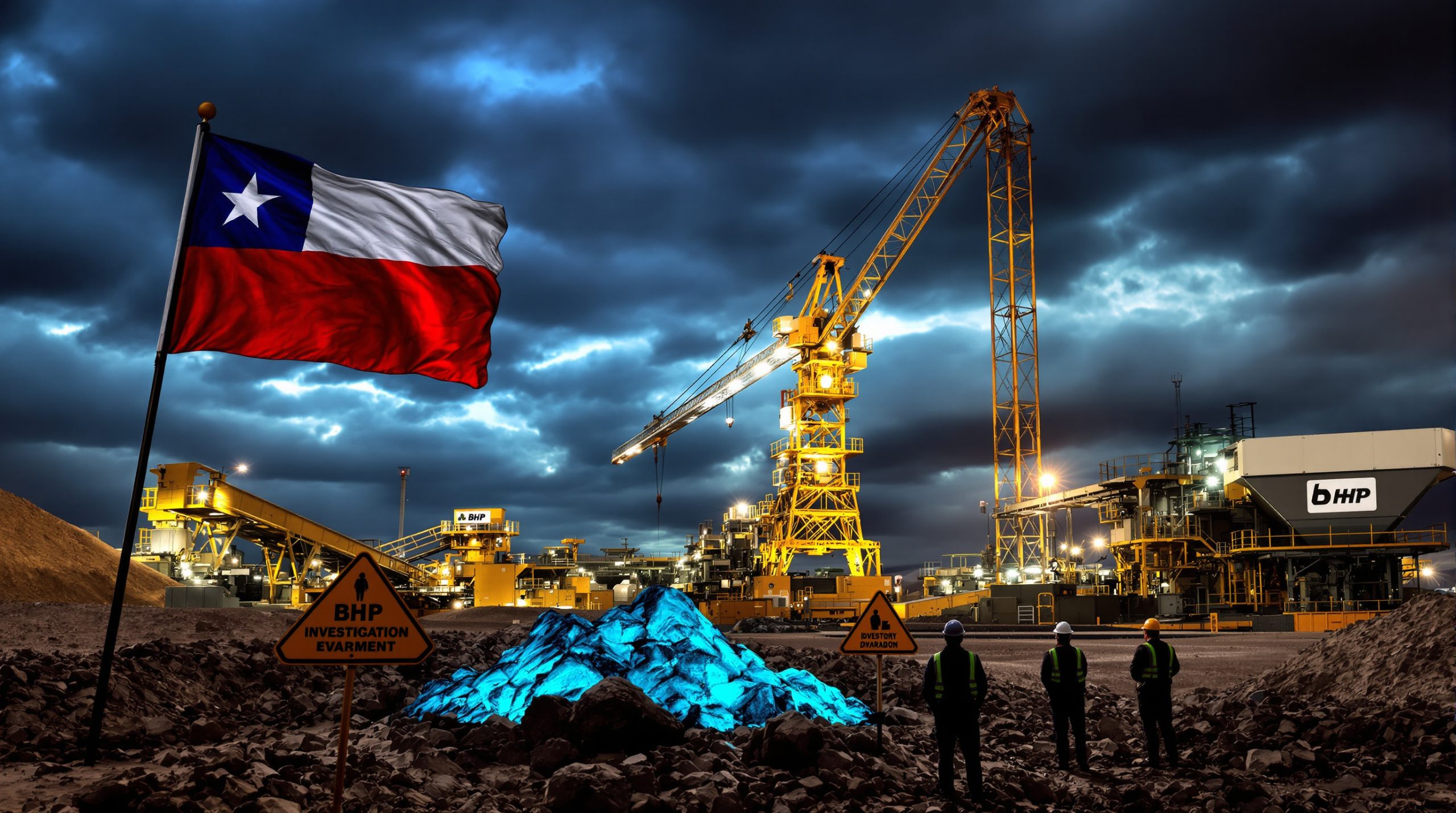How Natural Gas Transforms Middle Eastern Energy Markets
The Middle East is experiencing a profound energy transformation with natural gas emerging as the cornerstone of regional power generation and economic diversification strategies. This shift represents a strategic pivot as countries throughout the region balance traditional oil dominance with growing domestic energy needs and global market impact.
Natural gas now accounts for approximately 72% of the region's electricity production—a figure expected to grow by an additional 12% by 2030 as population growth, industrial expansion, and rising temperatures drive electricity demand. While renewable energy adoption is accelerating and projected to reach 20% of the generation mix by 2030, natural gas remains essential for grid stability and baseload power.
Regional gas production has increased approximately 15% since 2020, with projections indicating a further 30% rise by 2030 and 34% by 2035. This growth trajectory positions the Middle East to become the world's second-largest gas producer by 2025, surpassed only by North America.
Why Middle Eastern Nations Prioritize Gas Development
Strategic Energy Diversification
Middle Eastern nations are strategically expanding their natural gas capabilities to reduce oil dependence, meet growing domestic energy demand, and capitalize on export opportunities. This diversification serves multiple economic and security objectives:
- Preserves valuable oil resources for export markets
- Reduces vulnerability to oil price volatility
- Creates new revenue streams through gas exports
- Supports industrial development and economic diversification
- Provides a lower-carbon alternative to oil-fired power generation
The region's natural gas production has increased approximately 15% since 2020, with projections indicating a further 30% rise by 2030 and 34% by 2035. This growth trajectory positions the Middle East to become the world's second-largest gas producer by 2025, surpassed only by North America.
Domestic Demand Drivers
Several factors are fueling the region's growing appetite for natural gas:
- Electricity Generation: Rising power needs from population growth, urbanization, and increasing cooling requirements
- Industrial Expansion: Manufacturing and petrochemical sectors requiring gas as feedstock
- Water Desalination: Energy-intensive freshwater production in water-scarce countries
- Economic Diversification: Gas-based industries supporting broader economic development goals
Which Countries Are Leading the Middle East's Gas Revolution?
Qatar: The LNG Powerhouse
Qatar stands at the forefront of the region's natural gas transformation, leveraging its massive North Field—the world's largest non-associated gas field—to dominate global LNG markets. The country's ambitious expansion plans include:
- North Field East and North Field South projects
- Nearly doubling liquefaction capacity from 77 million tonnes per annum (Mtpa) to 142 Mtpa by decade's end
- Strengthening its position as the world's premier LNG exporter
- Strategic international partnerships with major energy companies
These developments reinforce Qatar's status as a global energy leader while providing the financial resources to support its Qatar National Vision 2030 economic diversification goals.
Saudi Arabia: Gas-Driven Transformation
Saudi Arabia exploration is aggressively developing its natural gas resources to power economic diversification and reduce oil consumption in domestic power generation. Key initiatives include:
- Targeting a 40% increase in gas output by 2030
- Developing the massive Jafurah unconventional gas field
- Expanding gas processing infrastructure through projects like Tanajib
- Integrating gas development with broader Vision 2030 economic goals
The Jafurah field represents Saudi Arabia's most significant gas project, with production expected to reach 2.2 billion cubic feet per day by 2036, supporting petrochemical manufacturing and power generation while reducing domestic oil consumption.
UAE: Strategic Gas Self-Sufficiency
The UAE is pursuing gas self-sufficiency through both conventional and unconventional resource development:
- Expanding production from the giant Ghasha ultra-sour gas concession
- Developing unconventional gas resources in the Ruwais area
- Investing in gas processing infrastructure to handle increasing volumes
- Balancing domestic needs with export commitments
These efforts align with the UAE's broader economic diversification strategy while supporting its growing industrial base and power generation needs.
What Infrastructure Investments Are Supporting Gas Expansion?
LNG Export Facilities
The region is significantly expanding its LNG export capabilities to monetize gas resources and reach global markets:
- Qatar's North Field expansion adding 65 Mtpa of liquefaction capacity
- Oman considering new liquefaction trains at its Qalhat complex
- UAE evaluating additional export capacity at Das Island
These investments position Middle Eastern suppliers to meet growing Asian demand for LNG while providing flexibility to serve European markets seeking alternatives to Russian pipeline gas.
Gas Processing Plants
Massive investments in gas processing infrastructure are enabling the region to handle increasing production volumes:
- Saudi Aramco developing multiple gas plants at Tanajib and Jafurah
- ADNOC expanding processing capacity at Habshan and Bab
- Qatar expanding processing facilities linked to North Field
These facilities are essential for removing impurities, separating valuable natural gas liquids, and preparing gas for domestic use or export.
Regional Pipeline Networks
Interconnected pipeline systems are enhancing regional gas trade and security:
- The Arab Gas Pipeline connecting Egypt, Jordan, Syria, and Lebanon
- The Dolphin Pipeline linking Qatar with the UAE and Oman
- Proposed pipeline expansions between Saudi Arabia and neighboring states
These networks facilitate efficient resource utilization while providing supply security and flexibility across the region.
How Middle Eastern NOCs Are Transforming Their Strategies
International Portfolio Expansion
Middle Eastern national oil companies (NOCs) are aggressively expanding their international gas portfolios:
- ADNOC's $80 billion XRG investment vehicle targeting global gas assets
- Saudi Aramco acquiring stakes in LNG projects through MidOcean Energy
- QatarEnergy pursuing exploration blocks in Namibia, Brazil, and Suriname
These international ventures allow NOCs to leverage their expertise while diversifying beyond domestic resources and accessing new markets.
Supply Chain Localization
Regional NOCs are transforming their supply chains to enhance resilience and create economic value:
- Saudi Aramco's In-Kingdom Total Value Add (IKTVA) program targeting 70% local procurement
- ADNOC's in-country value (ICV) program creating thousands of local jobs
- QatarEnergy's Tawteen initiative promoting upstream localization
These initiatives strengthen domestic industrial capabilities while reducing vulnerability to global supply chain disruptions.
Low-Carbon Investments
While maintaining focus on hydrocarbon development, Middle Eastern NOCs are strategically investing in low-carbon technologies:
- Carbon capture and storage projects at gas processing facilities
- Hydrogen production initiatives leveraging natural gas resources
- Energy efficiency improvements across operations
These investments position the region to supply lower-carbon energy as energy transition challenges increasingly prioritize emissions reduction.
What Challenges Does the Middle East's Gas Expansion Face?
Geopolitical Vulnerabilities
The region's strategic location creates both opportunities and vulnerabilities:
- Critical maritime chokepoints like the Strait of Hormuz handling approximately 20% of global petroleum liquids and LNG trade
- Regional conflicts potentially disrupting production and transportation
- Ongoing tensions affecting infrastructure development and investment
The Strait of Hormuz remains a particular hotspot due to Iran's strategic posture and persistent regional tensions. While full closure is unlikely, intermittent disruptions can elevate market volatility, prompting Gulf states to invest in alternative pipeline routes.
Market Competition
Middle Eastern gas exporters face growing competition from emerging suppliers:
- U.S. LNG exports expanding rapidly
- East African discoveries coming online
- Russian pipeline gas competing in Asian markets
This competitive landscape requires strategic positioning and cost efficiency to maintain market share.
Technical Challenges
The region's gas resources often present complex development challenges:
- High sulfur content requiring specialized processing
- Challenging reservoir conditions in some fields
- Water management issues in mature producing areas
Addressing these technical challenges requires significant investment and expertise, particularly for ultra-sour gas processing and water management in mature fields.
How Natural Gas Shapes the Middle East's Energy Future
Balancing Hydrocarbons and Renewables
The region is pursuing a balanced energy approach:
- Gas providing flexible power generation to complement intermittent renewables
- Combined cycle gas turbines offering high efficiency and lower emissions
- Hybrid power solutions integrating gas and solar generation
This balanced strategy leverages the region's abundant gas resources while enabling renewable energy growth.
Export Market Evolution
Middle Eastern gas exporters are adapting to changing global markets:
- Shifting from long-term contracts to more flexible arrangements
- Developing spot market capabilities
- Exploring new pricing mechanisms beyond oil indexation
These adaptations position regional exporters to remain competitive in evolving global gas markets.
Economic Transformation
Natural gas is catalyzing broader economic changes:
- Supporting industrial development beyond traditional oil sectors
- Creating high-skilled employment opportunities
- Enabling knowledge transfer and technological advancement
Product exports from the region have grown from about 5.7 million barrels per day in Q1 2019 to 7.2 million barrels per day in Q1 2025, now accounting for over 25% of global product trade. This significant growth demonstrates the economic impact of the gas revolution.
What the Future Holds for Middle East Gas Development
Production Growth Trajectory
The region's gas production is set for substantial growth:
- 30% increase projected by 2030 from 2020 levels
- Continued expansion through 2035 and beyond
- Shifting production mix from associated to non-associated gas
This growth trajectory will strengthen the Middle East's position in global gas markets while supporting domestic economic development.
Market Positioning
Middle Eastern suppliers are strategically positioning for future markets:
- Focusing on cost-competitive supply
- Emphasizing supply reliability and security
- Developing low-carbon credentials through emissions reduction
With about $400 billion worth of project sanctioning planned through 2035, the region is making substantial investments to secure its market position, with approximately one-third of announced expansions targeted toward offshore developments.
Strategic Partnerships
International collaboration is accelerating regional gas development:
- Technology partnerships with global energy majors
- Financial cooperation with international investors
- Market access agreements with key consuming nations
These partnerships enhance development capabilities while sharing risks and rewards.
Natural Gas as the Foundation of Middle Eastern Energy Security
Natural gas has emerged as the cornerstone of the Middle East's energy strategy, balancing immediate economic needs with longer-term sustainability goals. By leveraging their substantial gas resources, regional nations are diversifying their economies, meeting growing domestic energy demand, and maintaining their central role in global energy markets.
As the energy transition progresses, the Middle East's gas-centric approach provides flexibility to adapt to changing market conditions while supporting broader economic and social development goals. The region's strategic investments in gas infrastructure, combined with international expansion and low-carbon initiatives, position Middle Eastern suppliers to remain vital energy providers in an evolving global landscape.
The transformation of natural gas core middle east energy mix from a secondary resource to a strategic priority represents one of the most significant shifts in the region's energy history—one that will shape economic development, geopolitical relationships, and OPEC market influence for decades to come.
The Middle East supplies about one-third of the world's crude oil and one-fifth of its natural gas, with a quarter of global energy demand met by the region. This underscores its critical role amid rising geopolitical tensions that threaten trade flows, making sustained investments by Middle Eastern nations in both traditional oil and gas and emerging low-carbon technologies essential for balancing growing energy demand with supply resilience and OPEC production insights.
Ready to Spot the Next Major Mineral Discovery?
Don't miss out on significant ASX mineral discoveries that could transform your portfolio. Discovery Alert's proprietary Discovery IQ model delivers instant, actionable insights on major mineral announcements, helping you stay ahead of the market—explore historic discovery returns at https://discoveryalert.com.au/discoveries/ and start your 30-day free trial today.




